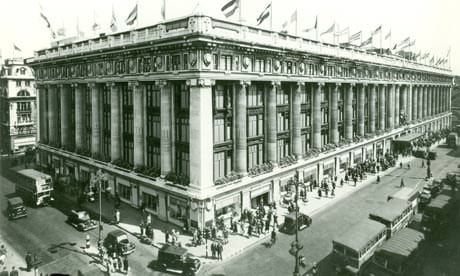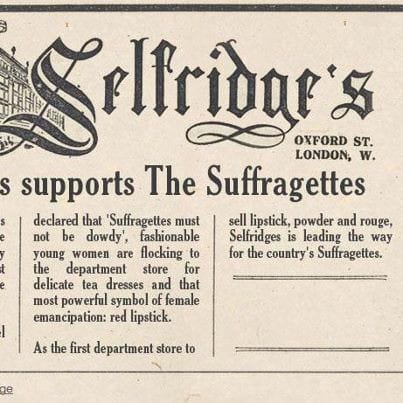5 marketing approaches from Harry Gordon Selfridge that still matter today
I've been following the Selfridges TV series and, although it's great, there's something that really bugs me about it. It feels like, as marketers, we spend a lot of time re-learning how to do marketing well? In case you've not seen it, the simplistic take on what Harry Gordon Selfridge believed is to… build your business (and so your promotion of it) around the customer.

Are we lost?
Over 100 years ago, retailers such as Harry Gordon Selfridge and John Wanamaker - credited with being the inventor of advertising and a marketing genius, alongside pioneering advertising men such as Claude C Hopkins who wrote Scientific Advertising in 1923 - seem to have had marketing licked. Browse popular marketing sites today though, and you'll see these lessons being shared as original thinking.
As operational thinking throttles brands to death (look at faded UK brands like Republic, GAME, Blockbuster, HMV, Jessops and JJB - businesses who made the High St only 10 years ago) I can only conclude that we're not learning? These brands focus on their undifferentiated or average products and the media and channels to promote them. New tools simply become advertising 2.0 instead of new opportunity to engage a customer.
Does the spirit of Mr Selfridge hold the secret?
In a world where the customer is in control of your brand, where they have the ability to make choices, there's a drive today of greater focus on the customer. Through using (big) data, on personalised, targeted and automated CRM and of course social media for 'out-reach' as well as listening. We talk about creating experiences, engaging users, telling stories and encouraging user interaction. Yet the lesson remains pretty simple…
“People will sit up and take notice of you if you will sit up and take notice of what makes them sit up and take notice.”
― Harry Gordon Selfridge
Think of the power we have to do this today, and what someone like Selfridge would have done with it. So what are you doing?
Here are 5 obvious things that Selfridge did, that so many other brands today fail miserably at:
- Create experiences for the customer - If there's one thing that Selfridge wanted to achieve, it was to make the shopping experience pleasurable. Re-read that last word, how true is that for most shopping experiences today (online or otherwise). Imagine that store opening when nothing like it had existed before in London. Who innovates like that today - a few? Zappos is always the go-to holy grail example for online retail. Is that it? Creating experiences is probably the single biggest learning from Selfridge, and one those dying High St giants still fail to see
- Curate great (useful / fascinating) content - by looking around him, Selfridge invited things that were of interest to people, into his store. Displays and exhibitions (curated content, you might say) became a reason to share, comment and like - albeit in the real world! Do something worth talking about beyond what you sell, we might say? An example from Selfridge - 1909, after the first cross-Channel flight, Louis Blériot's monoplane was exhibited at Selfridges, where it was seen by 12,000 people. Bold, PR-able, worth talking about and effective at driving traffic. You'd have to say so
- Design brand stories - probably most famously, Selfridge turned the front of the store into rich displays through the large windows at street level, something now synonymous with the store. This was revolutionary stuff at the time. Not sales promotion or stacked up products, we're talking designed displays 100 years ago, retail art. Another reason for people to stop, stare or generally just feel and share something positive about the store - albeit through word of mouth
- Amplify brand stories - Mr Selfridge was a prolific advertiser and an expert in combining paid and earned media to promote his stories. This wasn't about product alone though - he promoted stories that drew people in, whether those in-store displays, local stars or connecting with popular opinion at the time, the best example being the suffragettes movement
- Make what you offer easy to buy - shopping at the time made it hard for people to make purchase decisions, you couldn't browse before buying - the basics weren't known. Selfridge however, with his open store layout, trained experts and eye for design wanted to make it easy to find things, to buy, products on display and grouped in logical areas. Basics so often lost on many websites (especially mobile), today
Focussing on the customer, who'd have thought it.








